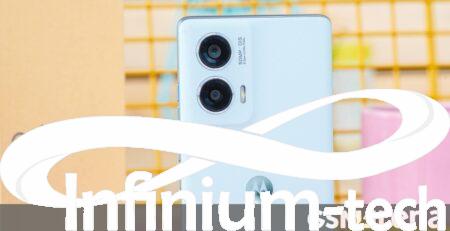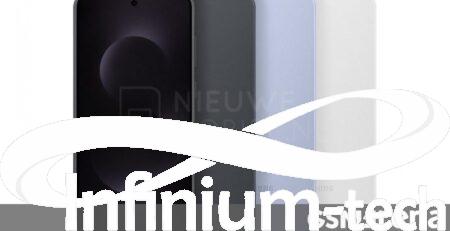Camera battle: vivo X200 Ultra vs X100 Ultra | Infinium-tech
Vivo X200 runs on the footsteps of the first ultra phone of Ultra Vivo and is one of the best camera-centric flagships of the previous year. They have some big shoes to fill.
We prefer Vivo’s approach – instead of going to safe (and boring) purification approach, Vivo shaken things in a major way with X200 Ultra. The impressive telephoto camera was the X100 Ultra star, so Vivo gave it a bright lens. The selfie appears to be a shooter.
The other two rear cameras bring massive changes and a new vision. 1-Inch 23 mm has gone to the main camera, which a lot of people can see as downgrade, but not so fast!
We are here to tell you that the new 35 mm main shooter is still not impressively spoiled with an impressive 1/1.28-inch sensor. And the new 14 mm ultravide with the same 1/1.28-inch sensor can be very well the main attraction of this phone.

Let’s keep the size of the sensor one aside for a second and talk lens. Both 24 mm (23 mm in this case) and 35 mm focal length are a strong following in the photographic community. The 35 mm is a classic reporter-style lens-the brightest angle, yet low-de-verse, is capable of capturing a lot of views, but a intimate, clearly visible to its images. 24 mm is a more wide-wide-angle lens, which lends itself to capture the scene, brings a dramatic meaning to an image, is heavy on deformity, especially if you bring your subject closer to the lens.
We keep in mind that some photographers will look at the 23 mm camera to remove as a delivery, while others may consider the new 35 mm alone to buy X200 Ultra.
But where 14 mm ultravide upgraded comes here. Thanks to its main camera-shaped sensor, it produces the main camera-quality images. It is much better than old ultravide, and the difference is also visible in good light.
So Vivo X200 Ultra is now a unique photographic proposal – it brings 14 mm, 35 mm and 85 mm lens with flagship image quality – each of these cameras will capture good images compared to the main camera of your iPhone, Galaxy Ultra or Pixel.
Now let’s see how the new Vivo flagship compare against its monumental predecessor.
Our first set of images is the main cameras-1-inch 23 mm f/1.8, 1/1.28-inch 35 mm f/1.7 to the right. The first thing you see is the difference in focal length. Numbers seem close, but they are not – 23 mm Very Exceeding 35 mm. We hope that even experienced shooters will need a few days to read their eyes in the new general.




Main Camera: Vivo X100 Ultra • Vivo X200 Ultra




Main Camera: Vivo X100 Ultra • Vivo X200 Ultra
Less deformation is clear when you see thumbnail. 35 mm is considered a wide-angle lens in the world of photo, but it is opposite in the world of smartphones, which has adjusted a broad focal length on main cameras over the years.
With 35 mm images, themes are close and large. This means that the new main camera is also better for people’s shots. Of course, some people may miss the distorted form of the old main camera.
We were most influenced, the new 35 mm main camera had the quality of the image. It is better at the 1-inch 23 mm camera at a per-pixel level than-the rendering is less digital, fine textures are less overshadorated, and 35 mm images have more clarity.
The colors from two main cameras also vary greatly. The X100 Ultra has much more saturated colors by default (although you can tune in the phone’s settings).




Main Camera: Vivo X100 Ultra • Vivo X200 Ultra
Going into ultravide, where we see a big difference in quality. The field of view is the same – 14 mm, 116 ‘ – but the sensors and lenses are different. The old ultravide has a 1/2.0-inch sensor and an F/2.2 lens. The new camera has 1/1.28-inch imager with a little bright f/2.0 lens.
The new ultravide jump and boundary is better. The expansion is very high, and it is presented in a more natural way. The new camera can understand the smallest of the texture, while the old camera struggles to present all, leaving a smear dirt in places where the new camera renders fine grass.
The new camera is also better and color rendering and the dynamic range has an increase.




Ultravide: Alive X100 Ultra • Vivo X200 Ultra




Ultravide: Alive X100 Ultra • Vivo X200 Ultra
Outside the color rendering, there is not a major difference in 85 mm images in good lights, which is a system-wide setting instead of aa-camera setting.




Zoom: Vivo X100 Ultra • Vivo X200 Ultra
In the next few images, we used the new 14 mm camera of Vivo X200 Ultra from 23 mm to 23 mm, to see if you can go away with not being a native 23 mm. The results are not far away in good light, especially if you do not pixel pipes and do not use them for social media. But 14 mm at X200 Ultra, as it is better, cannot match the native 1-inch 23 mm main camera on the X100 Ultra.




23 mm vs 14 mm zoom in: Vivo x100 Ultra • Vivo X200 Ultra
We also tried the other landscape – using the 23 mm camera of Vivo X100 Ultra, to match the vivo X200 Ultra’s main camera, zoom in 35 mm. It is a close match, but the 1 -inch camera is not as good as 35 mm as the native 35 mm.




Zoom Zoom in 23 mm vs 35 mm: Vivo X100 Ultra • Vivo X200 Ultra
The main cameras are all excellent at night. In addition to the difference in color, we look at equally great exposure, well -developed shade, balanced highlights, no distracted noise and the same, reliable expansion capture. Top points around all!




23 mm vs 35 mm at night: Vivo X100 Ultra • Vivo X200 Ultra
We were expected to see a big difference in the low -pronunciation performance of zoom cameras – while the X200 Ultra’s 85 mm zoom has the same sensor at the X100 Ultra, it brings a bright f/2.27 lens (vs. f/2.67). But it is not that they are separating both even in the dark. Yes, the new camera was able to keep the ISO a little less, but we cannot see any clear digital noise on zoom samples.
The new camera is slightly heavy when accelerated, and it processed its shadow slightly.




Night Zoom: Vivo X100 Ultra • Vivo X200 Ultra
Overall, we would say that Vivo did a strong follow -up for one of last year’s best cameraphone. The new 35 mm is polarizing for its focal length but is excellent in terms of quality.
The 85 mm zoom is as transformational as a year ago, only with a slightly better lens!
We said that Ultravide Vivo X200 can be the main attraction of Ultra, and we mean! This is the best ultravide-angle camera on a phone without question. It presents images beautifully as the main camera, which is not so on any other phone.
Our next stop is to fully test the new camera in low light. Stay for that!














Leave a Reply